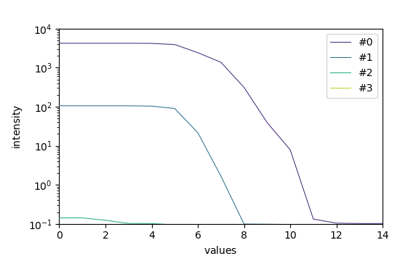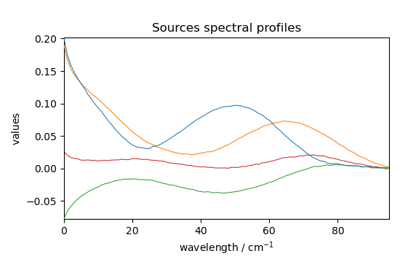spectrochempy.dot¶
- dot(a, b, strict=True, out=None)[source]¶
Return the dot product of two NDDatasets.
This function is the equivalent of
numpy.dotthat takes NDDataset as inputNote
Works only with 2-D arrays at the moment.
- Parameters
a, b (masked_array_like) – Inputs arrays.
strict (bool, optional) – Whether masked data are propagated (True) or set to 0 (False) for the computation. Default is False. Propagating the mask means that if a masked value appears in a row or column, the whole row or column is considered masked.
out (masked_array, optional) – Output argument. This must have the exact kind that would be returned if it was not used. In particular, it must have the right type, must be C-contiguous, and its dtype must be the dtype that would be returned for
dot(a,b). This is a performance feature. Therefore, if these conditions are not met, an exception is raised, instead of attempting to be flexible.
See also
numpy.dotEquivalent function for ndarrays.
numpy.ma.dotEquivalent function for masked ndarrays.

